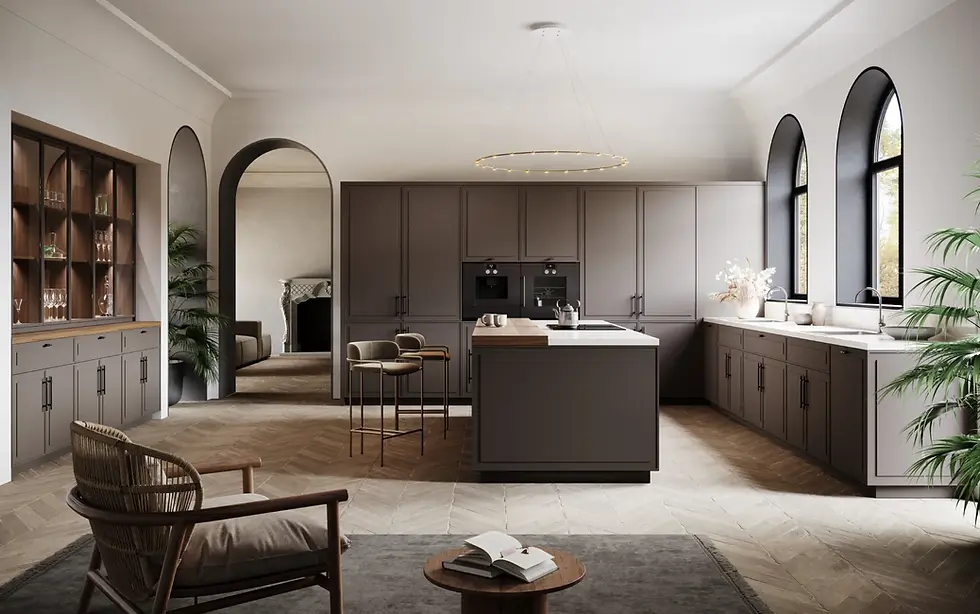Three Exquisite and Unique Custom Cabinetry Materials
- Daniel

- Mar 27, 2024
- 3 min read
Updated: Jun 19, 2024

I operated a custom cabinetry shop in San Francisco called SF Custom Cabinets. Like other local custom shops, we made beautiful, high-quality kitchen cabinetry and custom cabinets for all areas of the home.
In 2016, we started collaborating with a French cabinetry manufacturer called PYRAM Fine French Kitchens and opened our first full-service European kitchen showroom in the SF Design District. Shortly thereafter, we branched out into Italian cabinets, German cabinetry, and even an incredible Austrian furniture and cabinetmaker called TEAM 7. We changed our name to ARTEZIA European Cabinetry | Design Studio to reflect this expansion of our offering along with our focus on design.
For the first few years, we continued operating our custom cabinetry shop in the Bayview District in San Francisco while designing and installing European cabinetry. Over time, however, the cabinet shop became more of a warehouse for storing our French, German, and Italian custom cabinetry as we prepared for installation.
A lot of this shift in focus was natural; it just happened. However, it also had to do with the exceptional nature of European-made cabinetry. Along with better hardware and higher-quality painted cabinets, there are a few beautiful facing materials unique to European cabinets, which is the subject of this article. The three exquisite and unique European custom cabinetry materials highlighted today are solid wood, ceramic, and colored glass.

Solid Wood
Solid wood is probably the oldest material for cabinetry faces; virtually all cabinetmakers only use solid wood for framed doors, like Shaker designs. These are also known as 5-piece doors, as the frame is made from four pieces of solid wood, and the center panel is plywood. This is done to prevent bowing and warping because natural wood expands and contracts more than engineered materials like veneers and plywood. However, more modern slab or flat panel doors typically use something other than solid wood.
An exception is our Austrian manufacturing partner, TEAM 7. They use solid wood for everything: structures, doors, drawers, fronts, everything.
To avoid warping and bowing on their cabinet faces, their solid wood doors and panels have an internal core of solid wood that runs cross-grain to the direction of the face. This construction method keeps the faces stable.
TEAM 7 offers a limited selection of wood species treated with finishes that enhance the natural beauty of the wood. These include alder, beech, white oak, cherry, and walnut.

Ceramic
Ceramic is typically known as a tile and countertop material, but in Europe, we build cabinets with it. It is beautiful and extremely durable, available in stone and solid-color finishes. Some of the more popular ceramic finishes (technically known as 'ultra-compact’) are Neolith and Dekton, both made in Spain.
Ceramic door and drawer fronts are thin, only about 3mm, or 1/8". The thin ceramic face adheres to a wood substrate or metal frame in kitchen designs and for custom cabinetry throughout the home.
Austrian cabinetry line TEAM 7 offers five standard Neolith ceramic finishes in its system, but we can use other colors outside of their standard range for an additional fee. Our Italian line BINOVA has twenty-six different ceramic finishes to choose from, including solid-color and stone finishes in both honed and polished finishes. Finally, the sky is the limit in our 'Made to Measure' range from TM ITALIA. Custom cabinetry doors and drawer fronts can be made with any ceramic finish from Neolith, Dekton, or other European manufacturers.

Colored Glass
The third exquisite cabinetry material unique to European cabinetry is solid color glass.
Solid-color glass is offered in matte and glossy finishes, and with TEAM 7 and TM ITALIA, we can create custom colors within the RAL and NCS color systems.
Although we've used both, the matte solid color glass options are more popular than glossy. As with other materials, the shinier the sheen level, the less forgiving it is for fingerprints and oils.
To make custom-colored glass doors and fronts, a lacquered finish is set behind a glass face, which is then adhered to a structural panel. Depending on the manufacturer, the edges will be either wood, metal, or edge-banded.
Aesthetically, solid color glass produces a color depth and effect like no other material, and functionally, there is no chemical to the touch; glass is an inert and natural material.

Conclusion
So there you have it: three exquisite and unique materials for custom cabinetry to add to your design toolbox for your next project.
Whereas many European cabinetry manufacturers employ other materials in their lineup, such as wood veneer, lacquers, melamine, and so forth, these three material options comprise the full range of TEAM 7 custom cabinetry offerings.
You'd be surprised how much we can do with these three material options.



Comments